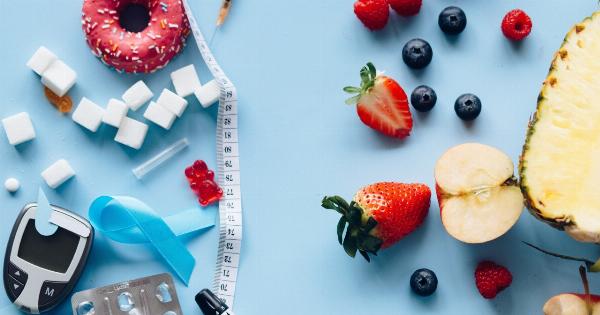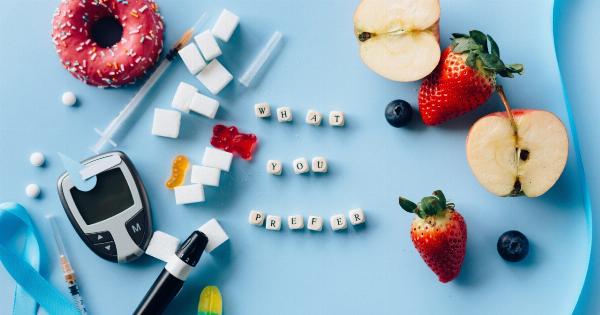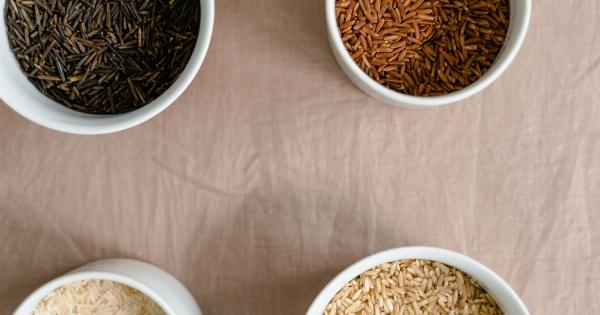Glycemic Index (GI) is a measure of how fast carbohydrates in food are broken down and absorbed in the body, which affects the rise in blood sugar levels.
Foods with a high GI are rapidly digested and absorbed, causing a rapid increase in blood sugar levels. On the other hand, foods with a low GI are digested and absorbed more slowly, resulting in a slower and more-controlled increase in blood sugar levels.
How is GI Measured?
GI is measured by comparing the rise in blood sugar levels after consuming a specific amount of a carbohydrate-containing food (usually 50 grams of available carbohydrates) to the rise in blood sugar levels after consuming the same amount of pure glucose. The results are then calculated as a percentage, with pure glucose being assigned a GI of 100.
Factors that Affect GI
Several factors affect the GI of a food, including:.
1. Type of Carbohydrate
The type of carbohydrate in a food affects its GI. Carbohydrates can be classified as simple or complex. Simple carbohydrates are made up of one or two sugar molecules and are quickly broken down and absorbed, resulting in a high GI.
Complex carbohydrates, on the other hand, are made up of many sugar molecules and take longer to digest and absorb, resulting in a lower GI. Foods that contain high amounts of simple sugars, such as candy and soft drinks, have a high GI.
2. Amount of Fiber
Fiber is a type of carbohydrate that is not digested by the body. Foods that are high in fiber take longer to digest and absorb, resulting in a lower GI. Fiber also helps to slow down the absorption of carbohydrates in the body, which also lowers the GI.
Foods that are high in fiber, such as fruits, vegetables, and whole grains, have a lower GI.
3. Amount of Fat and Protein
Foods that are high in fat and protein take longer to digest and absorb, which slows down the absorption of carbohydrates in the body and reduces the GI of the food. This is because fat and protein are digested more slowly than carbohydrates.
Foods that are high in fat and protein, such as meat and cheese, have a lower GI.
4. Cooking Time and Method
Cooking time and method can affect the GI of a food. Foods that are cooked for a longer period of time and at higher temperatures have a higher GI.
This is because cooking breaks down the complex carbohydrates into simpler sugars, which are more easily absorbed by the body. For example, overcooked pasta has a higher GI than al dente pasta, and mashed potatoes have a higher GI than boiled potatoes.
5. Degree of Ripeness
The degree of ripeness of fruits and vegetables can affect their GI. Fruits and vegetables that are riper have a higher GI than those that are less ripe.
This is because as fruits and vegetables ripen, their starches are converted into simpler sugars, which are more easily absorbed by the body. For example, a ripe banana has a higher GI than an unripe banana.
6. Food Processing
Food processing can affect the GI of a food. Processing can break down complex carbohydrates into simpler sugars, which are more easily absorbed by the body, resulting in a higher GI.
Foods that are highly processed, such as white bread and white rice, have a higher GI compared to their whole-grain counterparts.
7. Glycemic Load
Glycemic Load (GL) is a measure of both the GI and the amount of carbohydrates in a food. GL takes into account the portion size of the food and provides a more accurate picture of how a food affects blood sugar levels.
Foods with a high GL have a greater impact on blood sugar levels compared to foods with a low GL.
Conclusion
In summary, the GI of a food is determined by several factors, including the type of carbohydrate, the amount of fiber, the amount of fat and protein, cooking time and method, degree of ripeness, food processing, and glycemic load.
Foods with a high GI can cause rapid spikes in blood sugar levels, which can be harmful to health. On the other hand, foods with a low GI can help to control blood sugar levels and prevent chronic diseases such as diabetes.






























